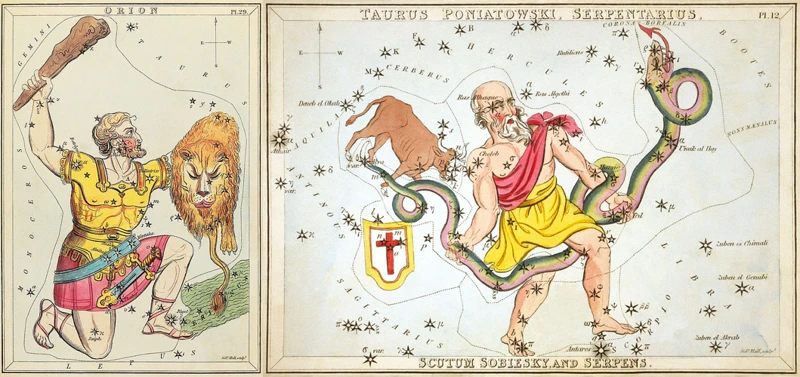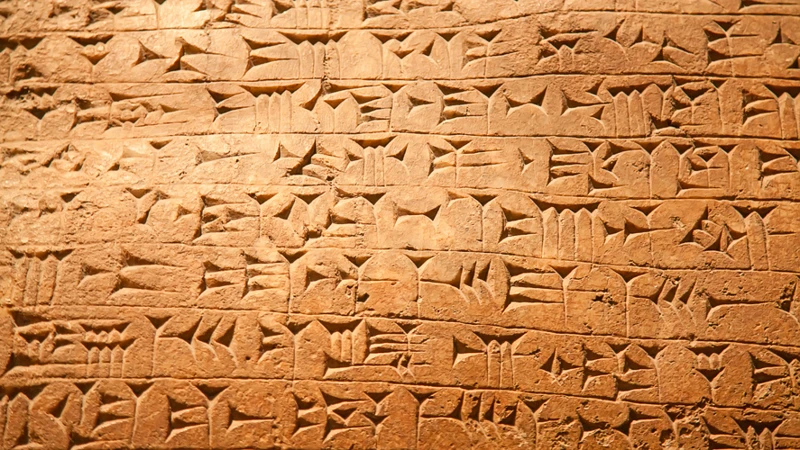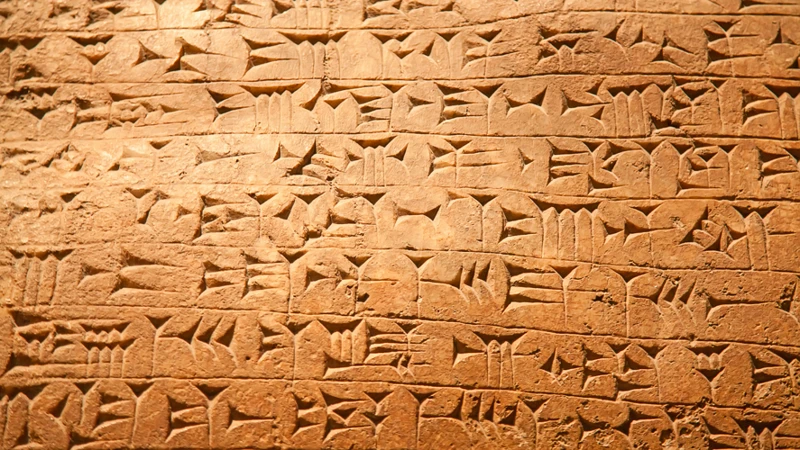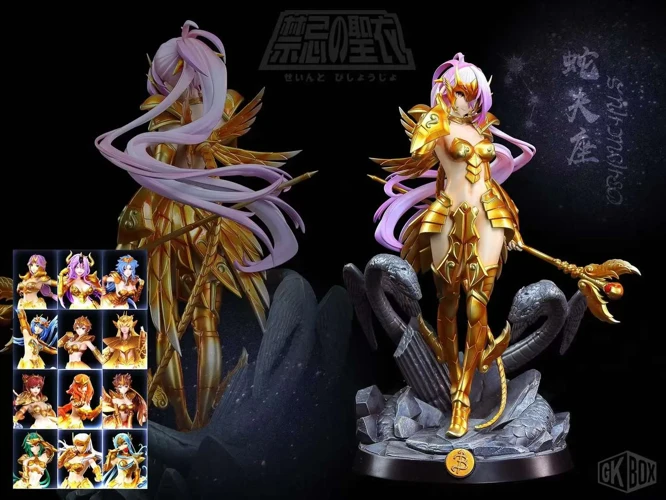Ancient Symbols in Mesopotamian Mythology and Their Meanings: Unveiling the Enigmatic Language of the Gods
Contents
- The Importance of Symbols in Mesopotamian Mythology
- Exploration of Ancient Mesopotamian Symbols
- Meanings and Interpretations of Mesopotamian Symbols
- Conclusion
- Frequently Asked Questions
- References
-
Frequently Asked Questions
- What are the ancient symbols in Mesopotamian mythology?
- How were symbols used in Mesopotamian mythology?
- What is the significance of the Anu symbol?
- What does the Ishtar symbol signify?
- What does the Enki symbol represent?
- What is the meaning of the Ninhursag symbol?
- How were Mesopotamian symbols interpreted?
- Why were symbols important in Mesopotamian mythology?
- How do Mesopotamian symbols connect to modern symbolism?
- What can we learn from studying Mesopotamian symbols?
- References
- Read More
The Importance of Symbols in Mesopotamian Mythology

The Importance of Symbols in Mesopotamian Mythology:
Symbols played a crucial role in Mesopotamian mythology, serving as a means of communication between humans and the divine realm. These ancient symbols were not merely decorative or arbitrary; they held deep significance and conveyed powerful messages. In a world where writing was not yet fully developed, symbols provided a visual language through which the Mesopotamians could express complex concepts and convey their beliefs, values, and myths. Symbols acted as a bridge between the mortal and immortal worlds, giving humans a glimpse into the realm of the gods. By understanding and interpreting these symbols, we can gain insight into the spiritual and cultural beliefs of the ancient Mesopotamians. Whether it was the symbol of Anu, the supreme god, or the symbol of Ishtar, the goddess of love and war, each symbol carried a rich and multifaceted meaning that reflected the diverse aspects of Mesopotamian mythology and society. The study of these symbols allows us to delve deeper into the mindset, rituals, and symbolism of the Mesopotamian civilization.
In order to comprehend the significance and meanings behind the symbols in Mesopotamian mythology, let us explore some of the most prominent ones, including the symbols of Anu, Ishtar, Enki, and Ninhursag. These symbols are not mere abstract designs, but rather representations of powerful deities embodying various aspects of life and the cosmos. The symbols provide a visual representation of the divine entities worshipped by the Mesopotamians, offering insights into their beliefs, rituals, and cosmology. In the following sections, we will delve into each symbol, unraveling its form, context, and associations in Mesopotamian mythology. As we navigate through this journey, we will discover the enigmatic language of the gods and gain a deeper understanding of the rich tapestry of Mesopotamian mythological symbols.
| Anu Symbol | Ishtar Symbol | Enki Symbol | Ninhursag Symbol |
|---|---|---|---|
| An article about the symbol of Anu can be found here. | An article about the symbol of Ishtar can be found here. | An article about the symbol of Enki can be found here. | An article about the symbol of Ninhursag can be found here. |
Exploration of Ancient Mesopotamian Symbols

In the exploration of ancient Mesopotamian symbols, we embark on a journey to decipher the mystical language of the gods. These symbols, whether inscribed on clay tablets or displayed in intricate artwork, offer a glimpse into the beliefs and rituals of the ancient Mesopotamians. The symbols are diverse and encompass a wide range of mythological entities and concepts. Let us delve into the world of Mesopotamian symbols through the following key examples:
- Anu Symbol: The symbol associated with Anu, the supreme god, embodies his authority and power. Its intricate design portrays celestial elements and is often depicted alongside other symbols representing the heavenly bodies and cosmic forces.
- Ishtar Symbol: Ishtar, the goddess of love and war, is represented by a symbol reflecting her dual nature. The symbol may incorporate elements like the eight-pointed star, representing Ishtar’s connection to the planet Venus, and celestial symbols indicating her influence over the sky and fertility.
- Enki Symbol: Enki, the god of water, wisdom, and magic, is often depicted by a symbol featuring water-related elements. This could include waves, flowing streams, or a divinity knot, which represents the flow of time and the interconnectedness of life.
- Ninhursag Symbol: Ninhursag, the mother goddess and nurturer of humankind, is symbolized by various natural elements. These may include the sacred mountain, representing her role as the Earth Mother, or the symbol of a tree, symbolizing fertility, abundance, and the cycle of life.
By exploring these ancient Mesopotamian symbols and their accompanying meanings, we gain insight into the intricate cosmology, mythology, and cultural beliefs of this fascinating civilization. These symbols not only serve as artistic expressions but also carry profound spiritual and societal significance that continues to captivate and intrigue us today.
Anu Symbol
Anu Symbol:
The Anu symbol holds great significance in Mesopotamian mythology as it represents Anu, the supreme god and ruler of the pantheon. This symbol takes the form of a winged disc with the central emblem of a four-pointed star. The winged disc represents the divine and heavenly nature of Anu, symbolizing his power and authority over the cosmos. The wings depict his ability to transcend earthly realms and soar to the heavens. The four-pointed star within the disc signifies Anu’s connection to the four cardinal directions, symbolizing his omnipresence and dominion over all aspects of creation.
The Anu symbol embodies the concept of divine kingship, portraying Anu as the ultimate ruler and protector of the universe. As the progenitor god, Anu was associated with the sky, rain, and the celestial bodies, and the symbol reflects this association. It also represents the divine order and cosmic harmony that Anu maintained through his role as the overseer of the gods and the maintainer of natural and social order. The Anu symbol is often depicted in religious art and inscriptions, indicating the esteemed position of Anu within Mesopotamian cosmology.
The ancient Mesopotamians revered and worshipped Anu, seeking his favor and blessings. The Anu symbol served as a focal point for prayers and rituals dedicated to the supreme god. It served as a potent talisman, believed to bring protection, prosperity, and divine intervention to those who invoked its power. The symbol also featured prominently in temples and palaces, embellishing the architecture and acting as a visual reminder of Anu’s presence and authority.
By studying the Anu symbol, we gain insight into the Mesopotamian worldview and their perception of the divine. It allows us to understand the complex interplay between gods, humans, and the natural world. The Anu symbol’s intricate design and layered meanings reflect the depth of Mesopotamian mythology and the profound impact of religious beliefs on their society.
Ishtar Symbol
Ishtar Symbol:
The symbol of Ishtar, the goddess of love and war, in Mesopotamian mythology is a representation of her various attributes and powers. The symbol commonly associated with Ishtar is a depiction of a eight-pointed star enclosed within a circle. The eight points of the star are said to represent the eight primary aspects of Ishtar, including love, fertility, sexuality, power, war, beauty, justice, and wisdom. The circle, on the other hand, symbolizes eternity and the cyclical nature of life. This symbol not only encompasses the multifaceted nature of Ishtar but also reflects her role as a divine figure who presides over the domains of love, fertility, and warfare. Ishtar was revered as a powerful and influential goddess, and her symbol served as a visual representation of her divine attributes. In Mesopotamian culture, Ishtar was worshipped for her ability to bring abundance, protect the community, and ensure victory in conflicts. The symbol of Ishtar was regarded as a talisman, believed to possess the power to attract love, promote fertility, and safeguard against harm. Through the study and interpretation of the Ishtar symbol, we can gain a deeper understanding of the significance of love, war, and feminine power in ancient Mesopotamian society.
Enki Symbol
Enki Symbol:
The symbol of Enki in Mesopotamian mythology holds significant importance as it represents the god of freshwater, wisdom, and creation. Enki, also known as Ea, was one of the most revered deities in the Mesopotamian pantheon. His symbol, often depicted as a hybrid creature, merges elements of fish, goat, and serpent. This amalgamation of diverse animal attributes symbolizes the various domains over which Enki held sway. The fish aspect signifies his association with water and fertility, while the goat element represents his connection to the earth and abundance. The serpent aspect is a symbol of wisdom, knowledge, and transformation, reflecting Enki’s role as the god of wisdom and magic.
Ninhursag Symbol
Ninhursag Symbol:
The Ninhursag symbol holds a significant place in Mesopotamian mythology, representing the goddess of fertility, nature, and motherhood. Also known as Ninmah or Nintu, Ninhursag was revered as the mother of all gods and humans, embodying the power of creation and nurturing. The symbol associated with Ninhursag depicts a stylized representation of a mountain with seven pointed peaks. This symbol represents her connection to the earth and the natural world, portraying her as the source of life and abundance. The seven peaks symbolize the seven divine powers she possessed, including creation, wisdom, and healing. The Ninhursag symbol also incorporates elements of plants and vegetation, reflecting her role as the goddess of fertility and the bringer of life. It is believed that the Ninhursag symbol was used in various religious rituals, signifying fertility, protection, and the cycle of life. By studying this symbol, we gain insight into the ancient Mesopotamian belief system and their reverence for the divine feminine and the cycles of nature.
In Mesopotamian mythology, Ninhursag played a pivotal role as the creator and nurturer of all living beings. She was often depicted as a compassionate and loving mother figure, symbolizing the benevolence and life-giving aspects of femininity. The Ninhursag symbol served as a reminder of her powerful presence and influence in the lives of the Mesopotamians. It represented their aspirations for fertility, prosperity, and a harmonious relationship with the natural world. The worship of Ninhursag and the use of her symbol were deeply ingrained in Mesopotamian culture, fostering a connection between humans and the divine. The symbol also served as a protective talisman, guarding against misfortune and ensuring the well-being of the people.
As we delve into the meanings and interpretations of the Ninhursag symbol, we uncover the profound reverence the Mesopotamians had for the divine feminine and their deep connection to the cycles of nature. The symbol of Ninhursag encapsulates their belief in the creative and nurturing aspects of the goddess, reminding us of the indomitable power of nature and the importance of honoring the life-giving forces that sustain us.
Please note that we do not have a specific article about the Ninhursag symbol at the moment.
Meanings and Interpretations of Mesopotamian Symbols

The meanings and interpretations of Mesopotamian symbols delve into the depths of ancient beliefs and cultural significance. Each symbol holds a unique and complex interpretation that provides insights into the Mesopotamian worldview. Let us explore the meanings of some prominent symbols:
- Anu Symbol: The symbol of Anu, the supreme god, represented the divine authority and cosmic order in Mesopotamian mythology. It portrayed Anu as the ruler of the gods and the heavens, symbolizing his role as the ultimate source of power and control.
- Ishtar Symbol: The symbol of Ishtar, the goddess of love and war, embodied various aspects of fertility, passion, and power. It represented both the nurturing and destructive forces in nature, reflecting Ishtar’s dual nature as a goddess of love and a warrior.
- Enki Symbol: The symbol of Enki, the god of wisdom and creation, depicted the union of fresh water and the cosmic sea. It symbolized Enki’s role as a bringer of knowledge, fertility, and life. The symbol also represented the divine source of wisdom and the interconnectedness of the natural world.
- Ninhursag Symbol: The symbol of Ninhursag, the goddess of fertility and nature, portrayed her as the nurturing mother goddess. It represented the cycles of life, growth, and abundance, as well as the connection between humans and the natural world.
By unraveling these meanings and interpretations, we can gain a deeper understanding of the Mesopotamian worldview, their reverence for the gods, and the significance of these symbols in their daily lives and rituals. It is through the exploration of these ancient symbols that we can unlock the secrets of Mesopotamian mythology and appreciate the profound symbolism embedded within their culture.
Anu Symbol
Anu Symbol:
The symbol of Anu, the supreme god in Mesopotamian mythology, is a representation of his divine power and authority. Depicted as a horned crown, the symbol portrays Anu as the ruler of the heavens and the celestial realm. The prominent horns in the symbol represent strength, majestic power, and fertility. They also symbolize the connection between the earthly and divine realms, as horns are often associated with both animals and deities. The crown itself signifies kingship and divine authority, signifying Anu’s position as the highest deity in the Mesopotamian pantheon. Additionally, the symbol of Anu often incorporates celestial bodies such as the sun, moon, and stars, emphasizing his role as the god of the heavens and cosmic order. The symbol of Anu reflects the Mesopotamian belief in a hierarchical structure of the divine, with Anu reigning supreme over all other deities. It serves as a reminder of the awe-inspiring power and cosmic dominion of this supreme god, encapsulating the essence of divine sovereignty in Mesopotamian mythology.
Note: An internal link to an article examining the significance of the Scorpio zodiac sign in Mesopotamian culture can be found here.
Ishtar Symbol
Ishtar Symbol:
One of the most significant symbols in Mesopotamian mythology is that of Ishtar, the goddess of love, war, and fertility. Represented by an eight-pointed star, the Ishtar symbol is laden with meaning. The eight points of the star correspond to the four cardinal directions and the four intermediate directions, symbolizing Ishtar’s connection to all aspects of the cosmos. The star also represents the dual nature of Ishtar, embodying both nurturing and destructive qualities.
The Ishtar symbol is often accompanied by depictions of lions, which are closely associated with the goddess. The lion represents Ishtar’s power, strength, and ferocity, as well as her role as the protector of cities and their inhabitants. In some representations, Ishtar is shown standing on the backs of lions, signifying her dominion over these majestic creatures.
The Ishtar symbol also incorporates elements such as wings and the crescent moon. The wings represent Ishtar’s ability to transcend earthly boundaries and traverse between different realms. They symbolize her role as a messenger between the divine and mortal realms, as well as her association with birds and flight. The crescent moon, a common motif in Mesopotamian art, symbolizes Ishtar’s connection to the lunar cycle and her influence on fertility and the tides.
In Mesopotamian mythology, Ishtar was revered for her beauty, passion, and power. She was both loved and feared by the people, as she could bring both blessings and calamities upon them. The Ishtar symbol encapsulates the multifaceted nature of this goddess and serves as a representation of her divine authority and influence over love, war, and fertility.
The Ishtar symbol also holds significance beyond Mesopotamian mythology. It has been associated with the planet Venus, named after the Roman counterpart of Ishtar. Venus, the Morning and Evening Star, has long been associated with love, beauty, and feminine energy. The Ishtar symbol, with its eight-pointed star and connections to love and fertility, encompasses these qualities and continues to resonate with people today.
Understanding the symbolism behind the Ishtar symbol allows us to explore the complex layers of Mesopotamian mythology and gain insights into the cultural and religious beliefs of this ancient civilization. The Ishtar symbol is a testament to the enduring power and influence of mythological symbols that transcend time and continue to captivate our imagination.
Enki Symbol
Enki Symbol:
The Enki symbol holds profound significance in Mesopotamian mythology, representing the god Enki, also known as Ea. Enki was the god of wisdom, creation, and the waters. His symbol often takes the form of a stylized, curved, and flowing river, emphasizing his association with the life-giving waters of the Tigris and Euphrates rivers. The symbol is characterized by its fluidity and delicate curves, mirroring the gracefully meandering course of a river. This representation reflects Enki’s role in nurturing and sustaining life, as the rivers were essential for agriculture and the prosperity of ancient Mesopotamia.
The Enki symbol is often accompanied by a flowing fish, which further reinforces his connections to water. Fish were considered sacred to Enki and were seen as symbols of fertility and abundance. The fish represented the life-giving essence of Enki’s waters and the bountiful resources they provided.
In addition to its association with water, the Enki symbol also represents wisdom and knowledge. Enki was revered as the god who possessed great wisdom and was the source of divine knowledge. The flowing nature of the symbol signifies the constant flow of wisdom and the ever-evolving nature of Enki’s knowledge. It is believed that Enki granted his wisdom to humanity, offering guidance, invention, and technological advancements.
The Enki symbol, with its depiction of flowing water and the presence of fish, embodies the essence of Enki’s power and attributes. This symbol served as a reminder to the Mesopotamians of Enki’s role as the source of life, creativity, and knowledge. Through the Enki symbol, people sought the blessings of Enki, hoping to gain wisdom, prosperity, and the vital resources provided by the rivers.
| Enki Symbol |
|---|
 |
Ninhursag Symbol
Ninhursag Symbol:
The Ninhursag symbol represents the goddess Ninhursag, also known as Ninmah or Nintur, in Mesopotamian mythology. Ninhursag was revered as the mother goddess, the nurturer and creator of all life. The symbol associated with her is a depiction of a woman with prominent breasts and wide hips, symbolizing fertility and the ability to bring forth new life. Often depicted with vegetation or plants surrounding her, the Ninhursag symbol also represents her role as a goddess of nature, agriculture, and fertility. It signifies her divine connection to the earth, her ability to provide sustenance and abundance, and her association with growth and renewal.
| Ninhursag Symbol |
|---|
| The Ninhursag symbol is typically depicted as a woman with prominent breasts and wide hips, emphasizing her role as a fertility goddess. It represents her nurturing and creative powers, symbolizing the ability to bring forth new life and sustain it. The symbol often includes depictions of vegetation and plants, signifying her connection to nature and her role as a goddess of agriculture. Through the Ninhursag symbol, we are reminded of the divine forces that govern fertility, growth, and renewal. |
Conclusion

Conclusion:
The symbols of Mesopotamian mythology hold a profound significance in understanding the cultural and religious beliefs of the ancient civilization. These symbols, such as the Anu symbol, Ishtar symbol, Enki symbol, and Ninhursag symbol, provide a glimpse into the complex cosmology and religious practices of the Mesopotamians. Each symbol carries layers of meanings and interpretations, reflecting the diverse aspects of life, nature, and the divine. Through the study of these symbols, we can unravel the enigmatic language of the gods and gain insight into the spiritual world that the Mesopotamians believed in.
The importance of symbols cannot be understated, as they served as a means of communication and connection between mortals and the divine realm. Symbols acted as visual representations of the deities worshipped and revered by the Mesopotamians. They were not mere arbitrary or decorative marks but possessed deep cultural and religious significance. By comprehending these symbols and their meanings, we can gain a deeper understanding of the beliefs, rituals, and values of the ancient Mesopotamians.
The exploration of ancient Mesopotamian symbols opens up a window into a world long past, allowing us to appreciate the rich heritage and mythology of this ancient civilization. As we decode the meanings and interpretations of these symbols, we gain a greater appreciation for the complexities of Mesopotamian culture and spirituality. The symbols serve as a reminder of the human desire to connect with the divine, to seek answers to life’s mysteries, and to understand our place in the cosmos. In studying these ancient symbols, we pay homage to the Mesopotamians and their enduring legacy in shaping the course of human history.
Frequently Asked Questions

FAQs about Symbols in Mesopotamian Mythology
1. What is the significance of symbols in Mesopotamian mythology?
Symbols in Mesopotamian mythology held deep meaning and acted as a means of communication between humans and the divine realm. They conveyed powerful messages, allowing the ancient Mesopotamians to express complex concepts and convey their beliefs, values, and myths.
2. How were symbols used in Mesopotamian society?
Symbols were used in various aspects of Mesopotamian society, including religious rituals, art, and architecture. They played a crucial role in religious ceremonies, acted as protective talismans, and adorned temples and sacred spaces.
3. What do the symbols of Anu and Ishtar represent?
The symbol of Anu represents the supreme god in Mesopotamian mythology, often associated with the heavens and celestial powers. The symbol of Ishtar represents the goddess of love, fertility, and war, embodying both nurturing and fierce aspects.
4. How did symbols convey cultural and spiritual beliefs?
Symbols served as visual representations of the gods and goddesses worshipped by the Mesopotamians. They provided insights into their cultural values, cosmology, and religious practices, reflecting their beliefs regarding the divine, the natural world, and human existence.
5. Were symbols used for divination or astrology?
Yes, symbols were used in Mesopotamian divination and astrology. They played a significant role in interpreting omens, predicting the future, and understanding the celestial forces believed to influence the destinies of individuals and the state.
6. What materials were symbols made from?
Symbols in Mesopotamian mythology were made from various materials, including stone, clay, metal, and wood. The choice of material often depended on the intended purpose and the prevailing artistic techniques of the time.
7. How were symbols passed down through generations?
Symbols were passed down through generations in Mesopotamian society through oral traditions, religious texts, and artistic representations. They were integral to the transmission of cultural and religious knowledge from one generation to the next.
8. Did symbols have different meanings in different contexts?
Yes, symbols in Mesopotamian mythology could have different meanings depending on the context in which they were used. The same symbol could represent different deities or concepts depending on its association with other symbols or the specific mythological narrative.
9. Are there any surviving artifacts with Mesopotamian symbols?
Yes, there are surviving artifacts such as cylinder seals, tablets, and sculptures that feature Mesopotamian symbols. These artifacts provide valuable insights into the symbolism and artistic practices of the time.
10. Can we still apply the meanings of these symbols today?
While the meanings of Mesopotamian symbols have roots in an ancient religious and cultural context, they can still hold relevance and inspire philosophical and artistic interpretations in the modern world. Their enduring symbolism speaks to universal themes of human existence and the relationship between mortals and the divine.
References
Frequently Asked Questions

What are the ancient symbols in Mesopotamian mythology?
Ancient symbols in Mesopotamian mythology are visual representations used to convey specific meanings and concepts within the religious and cultural beliefs of the people in ancient Mesopotamia.
How were symbols used in Mesopotamian mythology?
Symbols played a crucial role in Mesopotamian mythology as they were used to represent gods, goddesses, celestial bodies, natural elements, and various other aspects of the divine and earthly realms.
What is the significance of the Anu symbol?
The Anu symbol in Mesopotamian mythology represents the sky god Anu, who was considered the head of the pantheon. It is often depicted as a triangle with a single central dot and symbolizes divine authority and cosmic power.
What does the Ishtar symbol signify?
The Ishtar symbol in Mesopotamian mythology represents the goddess Ishtar, who was associated with love, war, and fertility. It typically portrays a star enclosed within a circle, symbolizing Ishtar’s connection to the heavens and her role as a powerful deity.
What does the Enki symbol represent?
The Enki symbol in Mesopotamian mythology represents the god Enki, who was the deity of wisdom, knowledge, and water. It often features a stylized goat-fish hybrid, symbolizing Enki’s association with both land and water.
What is the meaning of the Ninhursag symbol?
The Ninhursag symbol in Mesopotamian mythology represents the goddess Ninhursag, also known as the mother goddess and the giver of life. It typically depicts a double-headed axe or a combination of a mountain and a lion, symbolizing Ninhursag’s power over fertility, childbirth, and the earth.
How were Mesopotamian symbols interpreted?
Mesopotamian symbols were interpreted through various methods, including textual analysis, comparative mythology, and archaeological discoveries. Scholars and experts often rely on ancient texts, such as cuneiform inscriptions, to decipher the meanings and associations of these symbols.
Why were symbols important in Mesopotamian mythology?
Symbols were important in Mesopotamian mythology because they allowed people to communicate and understand complex theological concepts, rituals, and cosmological beliefs. They provided a visual language through which the divine and mortal realms could interact and be comprehended.
How do Mesopotamian symbols connect to modern symbolism?
Mesopotamian symbols have had a significant influence on modern symbolism, particularly in areas such as astrology, alchemy, and occult practices. Many contemporary symbols and archetypes can trace their origins back to the images and meanings associated with ancient Mesopotamian mythology.
What can we learn from studying Mesopotamian symbols?
Studying Mesopotamian symbols can provide insights into the religious, cultural, and intellectual aspects of ancient Mesopotamian civilization. By analyzing these symbols, we can gain a deeper understanding of their mythological narratives, belief systems, and the ways in which ancient societies perceived and interacted with their gods and the natural world.







